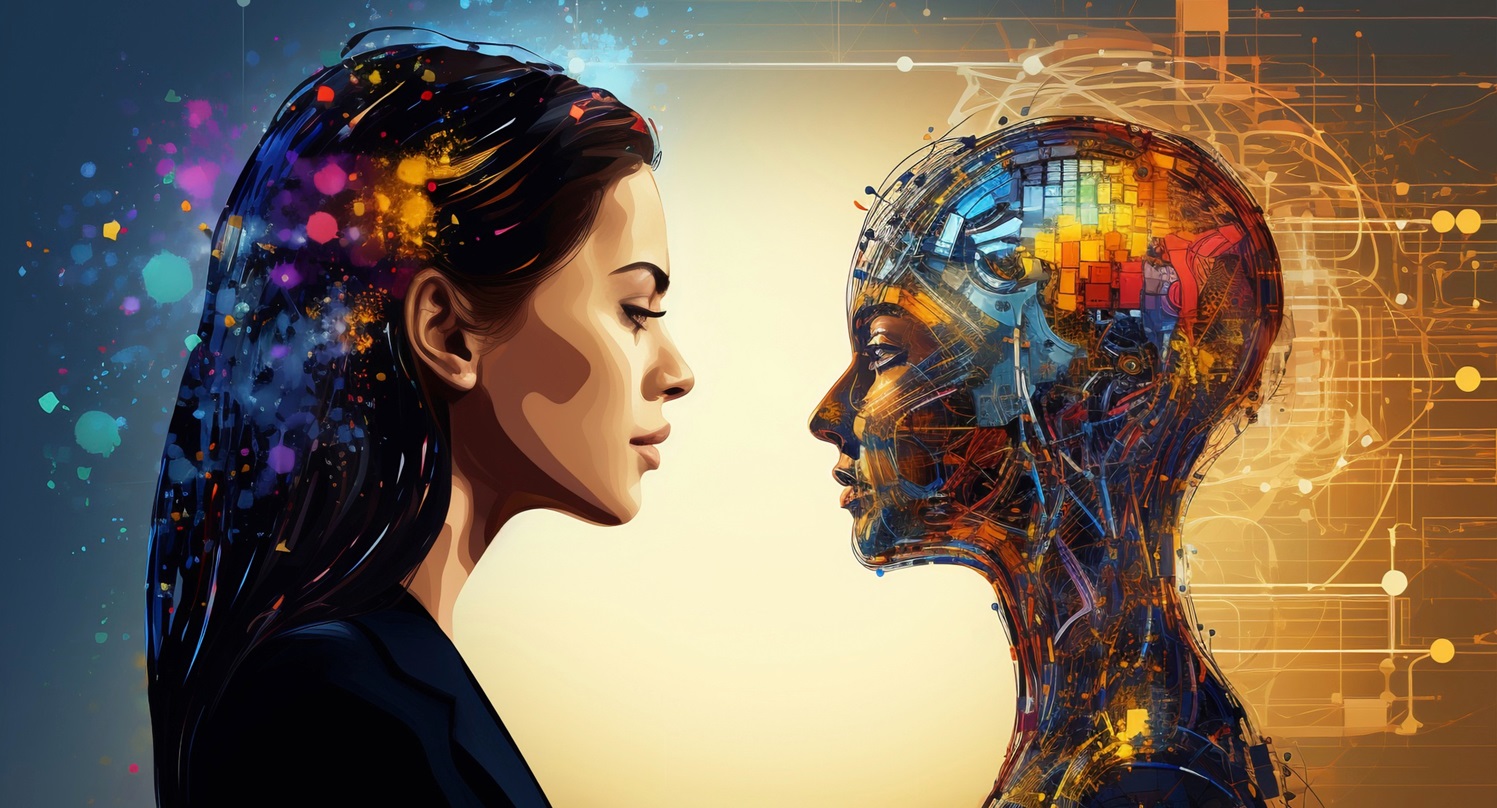
AI and Creativity: The Blend of Technology and Art
Introduction
In an era where technology continues to redefine our world, we find ourselves at the precipice of a remarkable fusion – one that unites artificial intelligence (AI) with creativity. This intersection is not merely about automating artistic processes but rather harnessing the power of machines to augment human imagination in unprecedented ways.
In this thought-provoking exploration, we delve into the dynamic relationship between AI and creativity, examining its potential impact on art forms as diverse as music, visual arts, literature, and beyond.
Defining Creativity and AI
Creativity refers to the ability to generate novel ideas or solutions through imaginative thinking. It encompasses various cognitive functions such as problem-solving, critical thinking, and emotional expression. On the other hand, AI represents the development of computer systems capable of performing tasks typically requiring human intelligence, including learning, reasoning, and decision-making. When these two forces converge, they offer us a unique opportunity to explore new frontiers of creative expression.
A Brief History of AI and Creativity
Artificial Intelligence and creativity have been linked throughout the early days of computing, when researchers such as Joseph Weizenbaum created ELIZA, an interactive program meant to mimic psychotherapy sessions.
Since then, numerous projects have emerged, each pushing the boundaries of what was once considered possible within the realm of machine-generated creativity. Notable examples include Amiga’s Painter II, which introduced procedural content generation techniques in digital painting; IBM’s Deep Blue, which demonstrated advanced chess playing capabilities; and more recently, Google’s Magenta project, which explores generative models for music, text, and images.
Advantages of AI Enhancing Creativity
1. Increased Efficiency
By leveraging AI algorithms, artists can streamline their workflows, allowing them to focus on higher-level aspects of their craft while leaving repetitive tasks to computers. For instance, AI tools can help musicians create harmonies, assist graphic designers in generating layouts, and aid writers in developing storylines.
2. Expanded Capabilities
With AI, creators are no longer limited by traditional methods or constraints. Machines can process vast amounts of data, enabling them to produce works that would be impossible without computational assistance. Examples include neural networks creating original artwork based on existing styles or composers using deep learning to compose symphonies inspired by classical masterpieces.
3. Accessibility and Collaboration
As AI technologies continue to evolve, they will make it easier for people from all walks of life to engage in creative pursuits. By democratizing access to tools previously reserved for professionals, AI has the potential to foster greater collaboration among artists across disciplines and geographic locations.
Challenges and Limitations
While AI offers exciting opportunities for enhancing creativity, there remain several challenges and limitations that must be addressed if we hope to realize its full potential.
1. Loss of Authenticity
Some critics argue that AI-assisted creations lack authenticity due to their reliance on predefined rules and patterns. However, others contend that AI can enhance authenticity by providing fresh perspectives and challenging established norms. Ultimately, whether AI-enhanced creations are “authentic” depends largely on how they are used and perceived by audiences.
2. Intellectual Property Concerns
As AI becomes increasingly adept at producing original works, questions surrounding intellectual property rights arise. Who owns the copyright to AI-created pieces? How should royalties be distributed? These issues require careful consideration and may necessitate legal reforms to ensure fairness and transparency.
3. Ethical Considerations
AI-driven creativity raises ethical concerns related to privacy, bias, and accountability. For example, AI systems trained on biased datasets might perpetuate stereotypes in generated content. Moreover, the use of personal data to inform AI-based creative endeavors could raise privacy concerns. To address these challenges, we need robust frameworks for responsible innovation and ongoing dialogue among stakeholders.
4. Future Prospects
Despite these challenges, the future looks bright for AI-augmented creativity. As AI technologies continue to advance, we expect to see even more innovative applications emerge across various domains. Here are some promising areas of growth:
5. Generative Storytelling
AI-powered narrative engines could revolutionize the way stories are told, offering readers immersive experiences tailored to their preferences. Such systems could also facilitate collaborative writing efforts, empowering authors to develop richer narratives than ever before.
6. Personalized Education
AI-enabled educational platforms could provide students with customized curricula, helping them learn at their own pace and according to their individual strengths and weaknesses. Creative exercises could become more engaging and effective thanks to AI-driven adaptive feedback mechanisms.
7. Virtual Reality Experiences
AI-generated virtual environments could enable users to interact with artworks in entirely new ways, fostering deeper engagement and appreciation for creative expressions. Imagine walking through a museum filled with AI-curated exhibits or exploring a virtual gallery featuring AI-generated sculptures.
Conclusion
At the crossroads of AI and creativity, we stand poised to unlock limitless possibilities. While the journey ahead presents both opportunities and obstacles, embracing this symbiotic relationship promises to transform the landscape of art and culture.
By addressing the challenges associated with AI-enhanced creativity, we can pave the way for a brighter, more inclusive future where everyone has the chance to express themselves freely and meaningfully. Let us embark upon this adventure together, guided by curiosity, compassion, and a shared commitment to progress.

